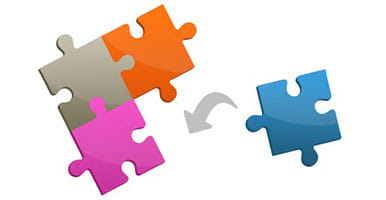Cultural influences on physical activity and diet

Research shows black and Asian children are three times more likely to have an “obesogenic lifestyle” (lower physical activity, higher screen time, unhealthy diet) than white children. In a study conducted at Liverpool John Moores University, the researchers explored the cultural factors that influence parents/carers’ perceptions of children’s weight and physical activity behaviours. Below are some of the key findings, followed by some recommendations for practice:
Findings
- Parents from some ethnic backgrounds (e.g. Somali, Bangladeshi, Yemeni) viewed a larger body size as desirable, and were less concerned by the potential consequences of childhood obesity. This is possibly due to the association of overweight with good health and wealth in certain cultures, and can lead some parents to want to “feed up” their children.
- Parents from certain ethnic backgrounds (e.g. Bangladeshi, Yemeni) placed a higher value on academic and cultural education than physical activity, which means time spent at faith schools, language classes and doing homework can leave little time for physical activity.
- Whilst Muslim girls are encouraged to be physically active, parents felt the dominant sports in the Western culture (e.g. football) did not fit with Islamic values for girls and women. The importance of female-only physical activity facilities was highlighted.
- Some parents viewed cultural food practices as a barrier to healthy eating (e.g. eating from sharing platters, eating a lot of starchy and high-fat foods, eating a “late supper”, cooking with ghee).
Recommendations
- Help parents understand the health consequences of unhealthy weight.
- Help parents understand how health is viewed from a religious point of view, Islam urges its adherents to take care of their physical and mental health and wellbeing.
- Recognise different cultural ideals and focus on health behaviours (i.e. physical activity and diet) rather than weight.
- In cases where education takes priority over physical activity, help parents understand how being active can help a child’s concentration and cognitive development.
- Find out about local services that offer female-only physical activity sessions (that allow flexible dress codes), and work with Muslim families to help them identify culturally-valued activities for their young girls.
- Help families identify their cultural barriers to healthy eating and work with them to come up with suitable solutions (e.g. by identifying healthy substitutes for cooking ingredients).
- Help parents to identify their religious values in the context of looking after their physical and mental health and wellbeing.
- Be aware of religious festivals (e.g. Ramadan) and the impact this may have on families’ dietary and physical activity behaviours.
It is also important to consider that black and Asian children living in the UK are more likely to experience child poverty. As covered in Why Weight Matters module, children from low socio-economic backgrounds are also at a greater risk of having both over- and under-weight. The higher prevalence of unhealthy weight in certain ethnic groups may therefore be linked to the socio-economic situation they are living in rather than their ethnicity per se.
Quiz
Below is a short quiz to help you evaluate your learning from this module. You may take the quiz as many times as you like.




